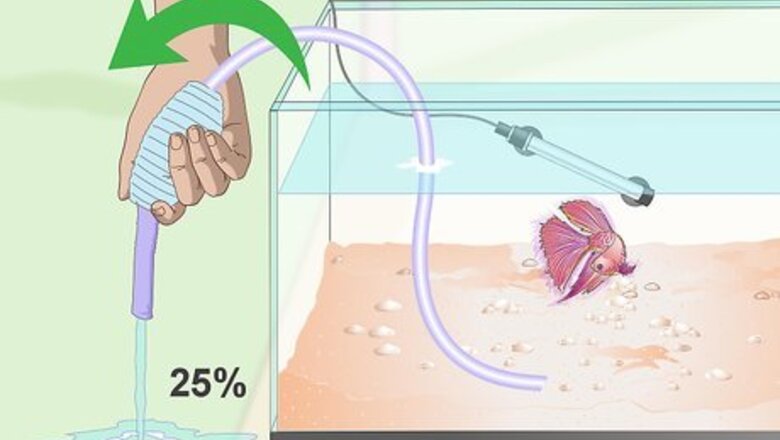
views
Preventing Popeye
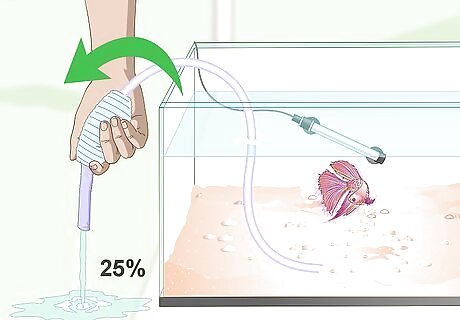
Change the water regularly. The most common cause of popeye is dirty water, and the best form of prevention is frequently replacing the dirty tank water with fresh water. Always have clean water in the betta’s fish tank or bowl to ensure that it won’t get popeye. If your betta is kept in a bowl or tank that holds two gallons of water or less, change a third of the water every 3-4 days. If your betta is kept in a larger aquarium, change 10% to 25% of the water every 2-4 weeks.
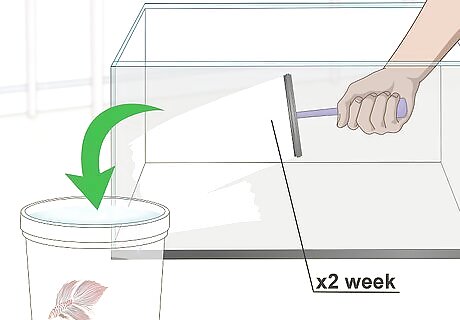
Gently remove your betta fish with a net and place it into a separate clean bowl of water. Dump out all of the water in the fish tank, remove all rocks and decorations, and rinse them with clean water. Using a paper towel, scrub the inside walls of the tank. Put the rocks and decorations back in the tank and fill the tank most of the way with bottled drinking water or pretreated tap water before putting your betta fish back in.
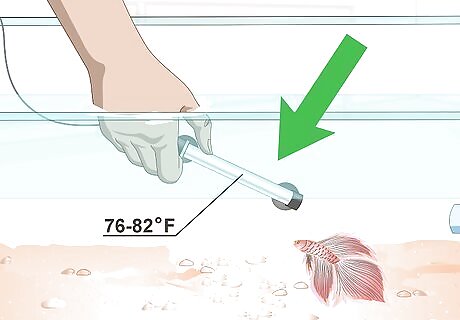
Keep the tank water warm. The natural habitat for betta fish is warm, stagnant water. Make sure the water is kept between 78 and 82 degrees Fahrenheit (24.4-27.7 degrees Celsius) in order to provide a healthy environment for your fish.
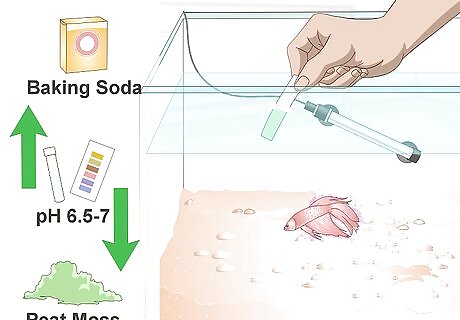
Keep the tank water slightly acidic. Use paper pH test strips to test how basic or acidic your betta’s water is. The pH should be kept at 6.5 or 7. If the pH is too high, filter water through peat moss before putting it in the tank. If the pH is too low, add baking soda or shells to the tank.
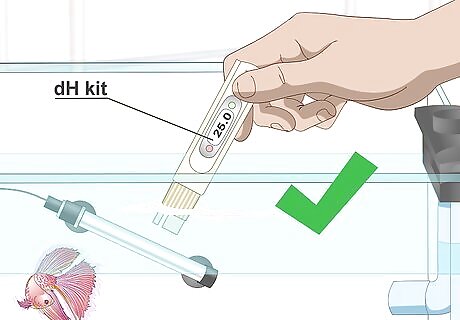
Purchase a dH kit to determine water hardness. Bettas prefer soft water, so keep the dH at 25 or lower. Go to a pet store to get specialized products that can extract the magnesium and calcium from your water if it is too hard.
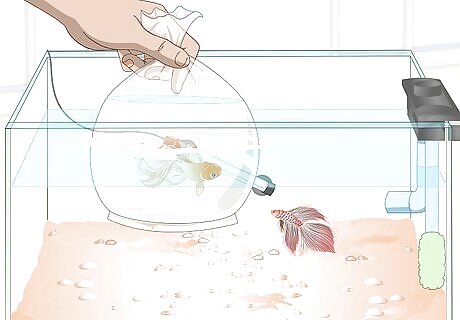
Carefully introduce new fish to the fish tank. Different fish require different environments, so make sure that you don’t add any fish to your tank that have conflicting environmental needs. Popeye often occurs when the tank water is not kept at the proper levels, and adding a new fish that thrives in a different kind of ecosystem might throw off those levels.
Treating Popeye
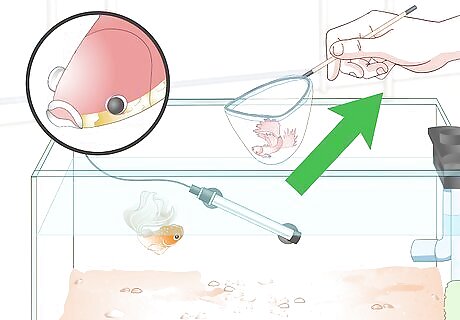
Isolate the betta fish. You should remove any hazardous decorations or aggressive fish from your betta’s environment. Your fish’s vision is most likely impaired, which means that the likelihood of running into sharp objects inside the aquarium or getting even more injured by other fish is higher. Avoid this easily by putting your fish in its own separate tank temporarily.
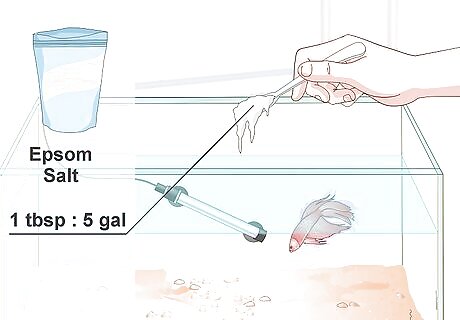
Put epsom salts in the fish tank. Epsom salt, or magnesium sulfate, does a good job of removing the fluid that’s built up behind your betta fish’s eye. Every three days, add one tablespoon for every 5 gallons (18.9 L) of water that your fish is in.
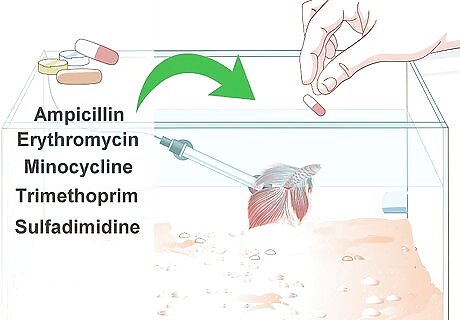
Add an antibiotic to the betta fish’s water. There are several different antibiotics that when added to the betta fish’s water, will make the popeye subside. Typically, you can purchase these antibiotics at pet stores. Put ampicillin in the fish tank and switch out the water every third day. Administer the medicine until a week after your fish’s popeye has gone away. If you catch the popeye early enough, you can use erythromycin, minocycline, trimethoprim, or sulfadimidine, which are all antibiotics typically used to treat fin rot.
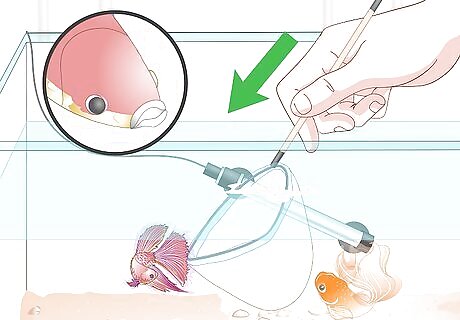
Return your betta fish to its original tank after the swelling subsides. It can take anywhere from a couple weeks to a couple months for the swelling to go down, and even longer for cornea damage to improve. Reintroduce your betta to its original environment a couple of weeks after its eyes look their normal size. In more severe cases, one of the betta’s eyes might decay and fall off during the healing process. If this happens, keep your betta isolated permanently.


















Comments
0 comment